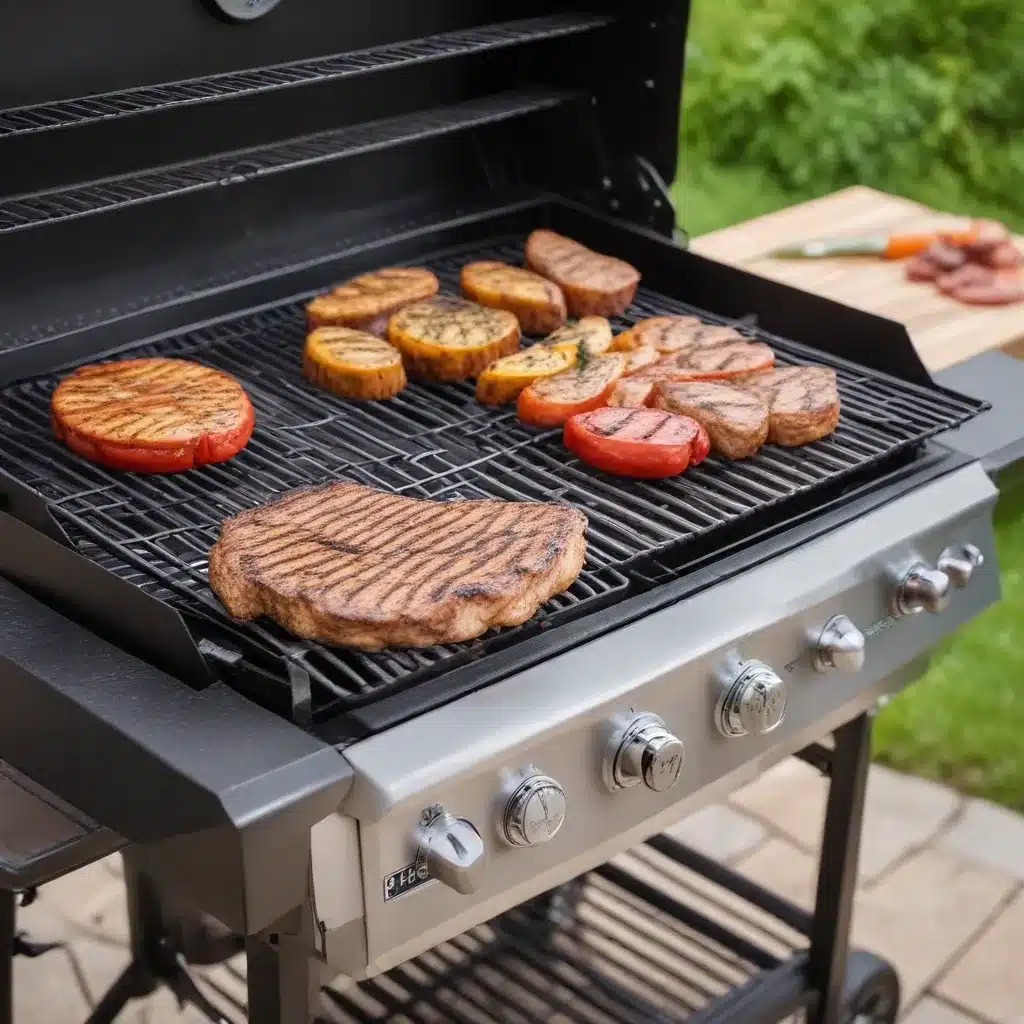
As an experienced barbecue pitmaster, I’ve honed my craft over the years, fine-tuning my techniques to create mouthwatering dishes that have won me accolades in the competitive grilling circuit. One of the fundamental skills I’ve mastered is the art of dual-zone grilling, a method that has completely transformed the way I approach outdoor cooking.
Mastering the Dual-Zone Setup
At the heart of the dual-zone grilling technique is the ability to create two distinct heat zones on your grill – a high-heat direct zone and a low-heat indirect zone. This setup allows you to have greater control over the cooking process, enabling you to simultaneously sear, roast, and even smoke your way to barbecue perfection.
Setting up a dual-zone grill is relatively straightforward, whether you’re working with a charcoal or gas-powered unit. For a charcoal grill, I like to use a charcoal chimney to quickly and evenly heat the coals, then arrange them on one side of the grill, leaving the other side empty. This creates the direct and indirect zones.
On a gas grill, I’ll turn on the burners on one side to high heat, while leaving the other side with the burners off, generating the same direct and indirect heat zones. Whichever grill you’re using, the key is to establish this temperature gradient, with one side sizzling hot and the other side gently warming.
The Power of Dual-Zone Cooking
The beauty of the dual-zone setup lies in the versatility it offers. With the direct heat zone, I can quickly sear steaks, chops, or burgers, locking in their juices and developing that irresistible caramelized crust. The indirect zone, on the other hand, allows me to slow-cook large cuts of meat, such as briskets or pork shoulders, transforming tough connective tissues into melt-in-your-mouth tenderness.
But the real magic happens when I can harness both zones simultaneously. For example, I might start a whole chicken or turkey in the indirect zone, allowing it to cook slowly and evenly, while finishing it off with a quick sear over the direct heat to crisp up the skin. This dual-zone approach ensures that the interior of the bird cooks to juicy perfection while the exterior achieves that sought-after golden-brown finish.
Mastering Temperature Control
One of the keys to successful dual-zone grilling is maintaining precise temperature control. I’ve learned the hard way that trusting your grill’s built-in thermometer can lead to disastrous results. Instead, I always keep a reliable digital thermometer on hand, constantly monitoring the temperatures in both the direct and indirect zones.
Calibrating your grill is also crucial. Before each use, I’ll do a few dry runs to familiarize myself with the unique temperature patterns of my particular unit. This allows me to make any necessary adjustments, ensuring I can achieve the precise heat levels I need for each stage of the cooking process.
It’s important to remember that outdoor cooking can be influenced by a variety of environmental factors, from wind and rain to direct sunlight. Being adaptable and making adjustments on the fly is key to maintaining that delicate balance of heat and temperature control.
Dual-Zone Grilling Techniques and Applications
The dual-zone setup opens up a world of culinary possibilities. One of my favorite techniques is the “reverse sear,” where I start a thick-cut steak or chop in the indirect zone, slowly bringing it up to the desired internal temperature. I then finish it off with a quick sear over the direct heat, locking in the juices and creating that beautiful, caramelized crust.
Another technique I love to employ is using the indirect zone for baking. Yes, baking! During the hot summer months, when I don’t want to heat up the kitchen, I’ll use the gentle, convection-style heat of the indirect zone to whip up dishes like pumpkin pie or a skillet apple crisp. The key is to monitor the temperature closely and make any necessary adjustments to the burners or vents.
But the true magic of dual-zone grilling shines when it comes to smoking. By positioning the food over the indirect zone and adding wood chips or chunks, I can infuse my dishes with rich, aromatic smoke, transforming them into barbecue masterpieces. Whether I’m smoking a whole turkey or a rack of ribs, the combination of low, indirect heat and the perfect balance of smoke creates an unparalleled depth of flavor.
Putting It All Together
As a seasoned pitmaster, I can attest that the dual-zone grilling method is a game-changer. By mastering the art of creating and maintaining these distinct heat zones, I’ve been able to unlock a world of culinary possibilities, delivering consistently succulent, flavorful, and visually stunning barbecue dishes.
Whether you’re a backyard grilling enthusiast or a competitive pitmaster, I encourage you to embrace the dual-zone technique and let it elevate your outdoor cooking to new heights. With a bit of practice and a keen eye for temperature control, you too can become a master of the grill, wowing your friends and family with your barbecue prowess.
So, the next time you fire up your grill, remember the power of the dual-zone setup. Harness the searing intensity of the direct heat and the gentle embrace of the indirect zone to create barbecue magic. The possibilities are endless, and the rewards are undeniably delicious.
If you’re interested in exploring more of Creekside BBQ’s expertise and industry insights, I invite you to visit our website at https://www.creeksidebbq.com/. There, you’ll find a wealth of resources, from mouthwatering recipes to in-depth guides on mastering the art of barbecue. Happy grilling!

